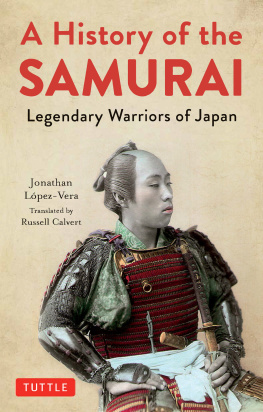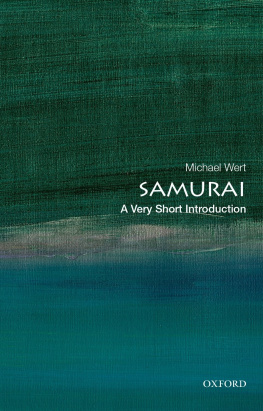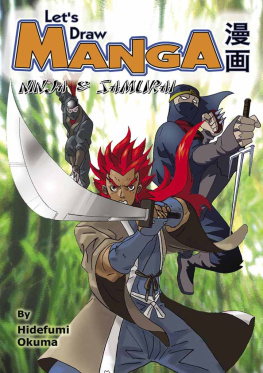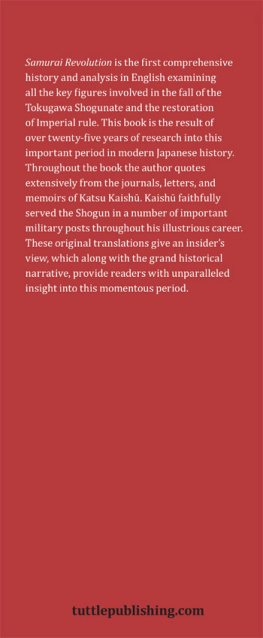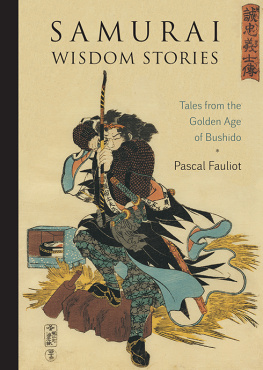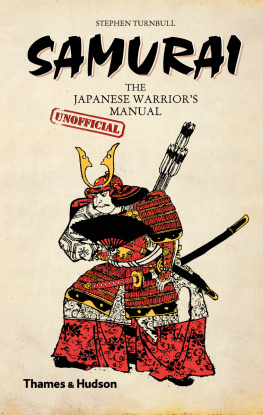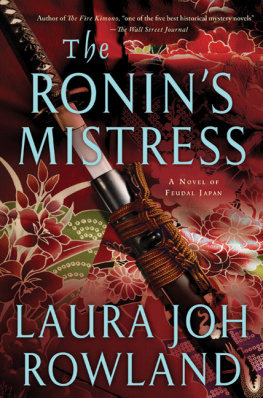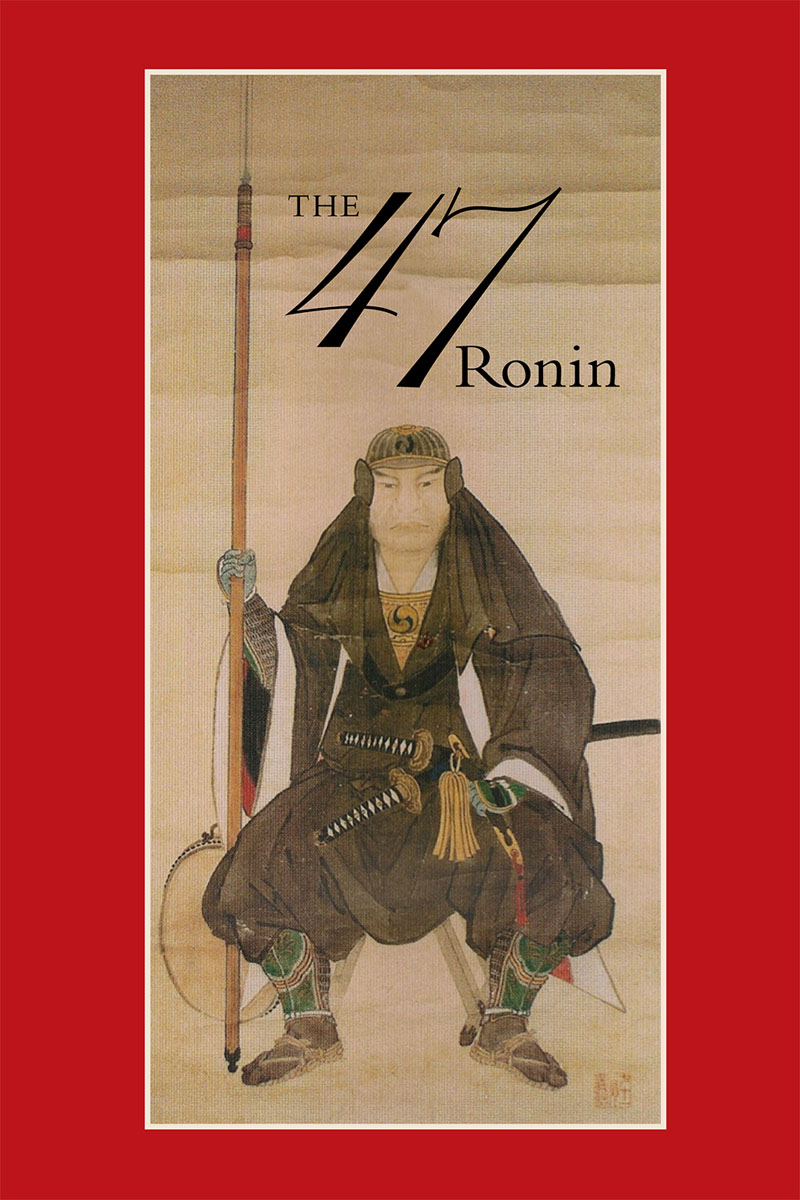
T his is the story of a few men who valued justice more than life. They were members of the large Corps of Samurai in the feudal domain of Ak in western Japan. But when their lord lost his temper and drew his sword within the castle of the Shogun, the law decreed that he should be sentenced to death, and that all of his vassals would become ronindismissed from employment, evicted from their homes, and deprived of their income. All 308 samurai in Ak knew the law and accepted it. And if their lord had succeeded in killing the man he attacked in the castle, that would have been the tragic end of this episode.
But their lord was subdued and failed to kill his enemy; which meant that yet another law came into play. The Principle of Equal Punishment, as it was known, decreed that in any quarrel, regardless of who was right or wrong, both parties should be put to death. Yet when the Shogun sentenced the lord of Ak, Asano Taku-mi-no-Kami, to death, in the same breath he fully pardoned Kira Kzuke-no-Suke, the man Asano had tried to kill. This was a clear case of injustice. But what were they to doagainst the decree of the Shogun?
Eventually these law-abiding samurai realized that they could attain justice only if they were willing to enforce the Principle of Equal Punishment themselves. Which meant vendetta. Kira must die. And as the stakes became clearer, the number of those committed to the cause dwindled from 308 to only 47 ronin.
This book tells the harrowing tale of how this case was argued, what was decided, and what ultimately became of those 47 men who remained.
Library of Congress Number: 2019932656
ISBN: 978-0-918172-77-8 (paper)
Copyright 2019 G. G. Rowley
Cover Design: Karen Davidson
Design: Karen Davidson and Ingrid Bromberg Kennedy
Leetes Island Books, Box 1 Sedgwick, Maine 04676
First Edition
ALL RIGHTS RESERVED
No part of this work may be reproduced in any form without express written permission of the publisher. leetesislandbooks.com
For Gaye,
with whom it all began.
.
A warrior with no sense of honor is hardly better than a banditalthough if you say that nowadays, youll only be thought a crackpot. Besides, it does you no good to be known as a knocker. I just keep my mouth shut.
Hazama Kihei to ishi Gozaemon,
LETTER DATED 1688, NINTH MONTH, 10TH DAY
CONTENTS

PREFACE
Nur das Grndliche wahrhaft unterhaltend sei. Only the exhaustive can be truly interesting.
Thomas Mann, Der Zauberberg
This book is as true to fact as I have been able to make it. It is closely based upon contemporary documents. All the events it relates actually took place. All the people involved in them really existed. Even the dialogue is drawn from documentary sources, either verbatim or reconstructed from reported speech. I have invented nothing.
This is not to suggest, though, that I have succeeded in telling the whole truth. For even those who participated in the vendetta could report only what little of the whole they themselves had seen, and their perceptions of those events sometimes differ markedly from those of their comrades. And even contemporary attempts to tell the whole storythe true records, as they called themmust be read not so much as history but as something more like newspapers: reports not of what actually happened but of what people heard, thought, or were saying had happened.
With all this in mind, I have labored to construct a narrative as complete, precise, and factually correct as the sources permit, and to resist the urge to portray people as I would wish them to have been rather than as they were. To this end, I have indulged in one small fiction, which I must declare here: I tell the story not in my own voice but that of a narrator who grew up among samurai, and who knew well the documents upon which this story must be based. hashi Yoshiz was a real person, who will introduce himself in the prologue to the story. Although the author of several books, including two on the assassination of Ii Kamon-no-Kami Naosuke (18151860), Yoshiz never wrote a word about the Ak vendetta. But by attempting to inhabit his persona, I aim to avoid saying anything that he would not have said if he had told his own tale. I hope that his presence will keep me honest. As the old saying goes, Some fictions can lead us to the truth. I hope this is one of them.
ACKNOWLEDGMENTS
This book has been a long time coming, and I owe many debts to many people, some of them friends as well as benefactors, some of them scholars and samurai who must be revered across a distance of centuries for the treasures of industry and erudition they have left us. These are debts that I can never repay. My bibliography, I hope, will acknowledge the magnitude of what I owe those who are survived by only their works; those still with us I wish to thank individually.
Two constant (in all senses of the word) and extraordinarily congenial companions on this journey have been Henry Smith, professor of history at Columbia University, and W. J. Boot, professor of Japanese and long-time colleague at the University of Leiden. In the early days of the project, when my own efforts were more in the nature of a neophytes groping than anything that could be called research, Henry was a generous and knowledgeable interlocutor and guide. And when I reached the stage at which I could begin writing, Wim, voluntarily, spent vast amounts of his time reading, and commenting upon, every chapter as it was completed. Without Wim and Henry to talk with about our mutual friends the ronin, I would have been far more poorly prepared to write about them. Their wisdom and generosity have made this a better book.
I am grateful, too, to Professor Kasaya Kazuhiko of the International Research Center for Japanese Studies, who not only knew the answer to every question I ever asked him (and there were many), but seemed always to have a beautifully organized lecture on the subject at the tip of his tongue.
To Professor Yokoyama Toshio of Kyoto University, whose knowledge of the city of Kyoto, past and present, seems inexhaustible, and whose ready sharing of that knowledge has been invaluable to this project.
To Professor Nakano Mitsutoshi for arranging entre to the Kyushu University Library, and especially for making available its copy of Ehon Chshingura, one of the very few complete sets of the work still extant.
To Dr. Brian Powell of the University of Oxford for sharing his vast knowledge of the Chshingura dramatic tradition and, in particular, for introducing me to both Mayama Seikas perceptive reading of the incident and his invaluable gazetteer, Chshingura chishi.
To Dr. James McMullen of the University of Oxford for helping me to place the ruminations of my characters in the larger contexts of Edo-period thought and, especially, Confucianism in its Japanese permutations.
To Professor Glenn Stockwell of Waseda University for explaining and demonstrating the proper procedure (kata) for kaishaku as prescribed in the traditions of the Mus Jikiden Ry of Iaid, of which Professor Stockwell is the current Iemoto.
To Jeroen Veldhuisen (now Yamashita Noboru) for demonstrating the technique (kata) of disarming a man wielding a sword that Kajikawa Yosbei probably would have used.
To Okumura Shizuo, a native of Ak, for countless nuggets of local lore and guidance of a depth that only someone born to the region could give.
Next page

